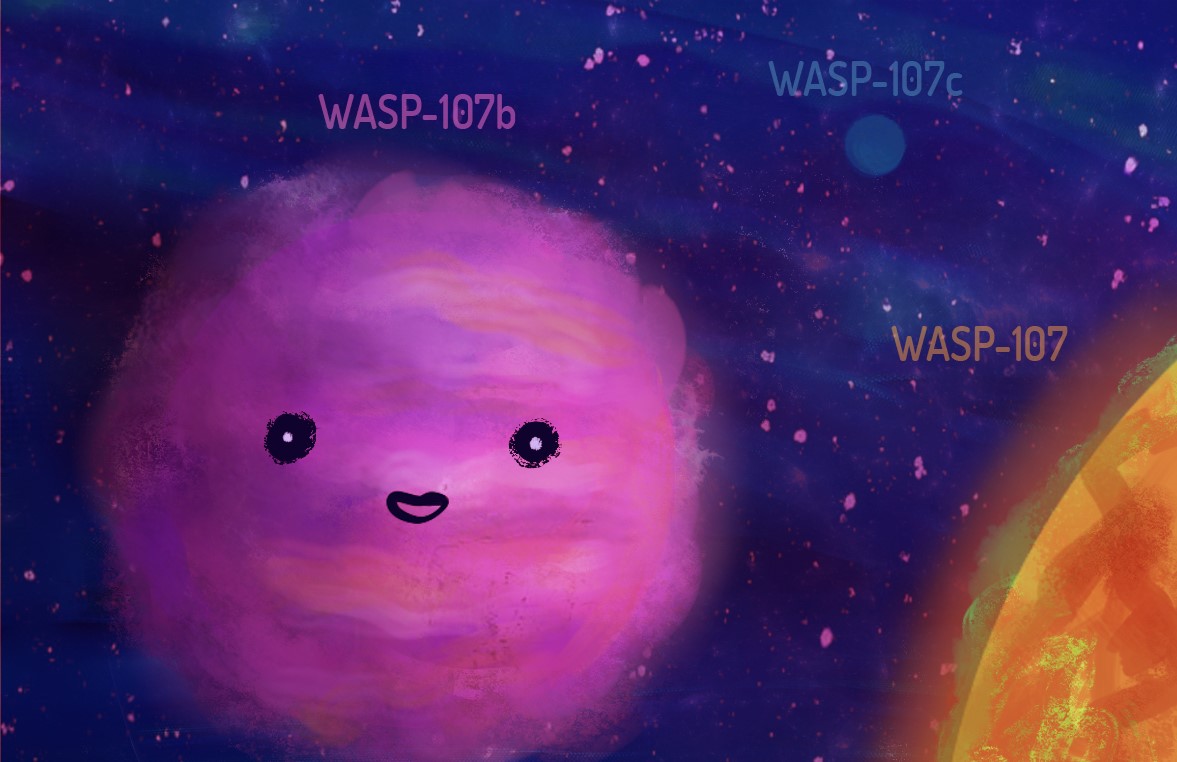Since the first exoplanet was discovered in 1992, scientists have identified more than 4,000 of these astronomical bodies. Exoplanets—planets found outside our solar system—have been shown to challenge traditional theories of planet formation, which were based on Earth’s own system.
A recent study has revealed that gas giants can form from a smaller core than previously thought possible. The study was led by Caroline Piaulet, a PhD student at the University of Montreal’s Institute for Research on Exoplanets (iREx), in collaboration with a team of astronomers including Eve Lee, an assistant professor in the Department of Physics at McGill and the McGill Space Institute.
The exoplanet WASP-107b, which orbits the star WASP-107, was first observed in 2017. This gas giant is classified as a “super-puff”—a planet with a very large radius compared to its low mass.
The initial low estimate of its mass prompted researchers to seek a more accurate estimate using data collected over several years by the Keck Observatory in Hawaii. Using the radial velocity method, they could determine the planet’s mass by observing the effect of its gravitational pull on its host star. This independent, direct measurement of the mass showed that the planet was even lighter than expected—about 10 times lighter than Jupiter but similar in size.
Planets begin to form when dust and gas particles surrounding a young star in a protoplanetary disk clump together. If a massive rocky core is formed, its strong gravitational pull can accrete enough gaseous atmosphere to create a gas giant before the disk dissipates.
WASP-107b’s low density suggested that while the gas envelope comprises over 85 per cent of its mass, its core is no more than four times the mass of Earth. This estimate is significantly lower than the previously believed threshold of about 10 earth masses considered necessary to form a gas giant.
“The bigger implication [is] that it doesn’t take as much solid [material] as we thought to make a gas giant,” Piaulet said in an interview with The McGill Tribune. “The riddle that it posed was how could such a big planet form from such an apparently low-mass core.”
One theory is that WASP-107b formed farther away from its star than its current location, and the colder temperature allowed the core to accumulate an atmosphere faster.
“One way to think about this is that [the core] has some gravitational sphere of influence, that is, the maximum radius in which you can gather some gaseous atmosphere initially,” Lee said in an interview with the Tribune. “But this atmosphere eventually cools down […] and shrinks, [leaving] some empty room within this gravitational sphere of influence for the ambient gas to refill. And that means that if it can cool faster, you can gather a more massive envelope a lot quicker.”
The team considered the possibility of the planet interacting with WASP-107c, another planet in the system. Located farther away from its host star than WASP-107b, WASP-107c has a notably eccentric orbit. Deviation from a near-circular orbit is a sign of some disturbance in the planet’s history, which could indicate an encounter with another planet.
“Imagining that both [WASP-107b and WASP-107c were] far from the star, having a close interaction of the two might have slingshotted [WASP-107b] into an eccentric orbit such that the closest approach point was very close to the star,” Piaulet said. “And eventually […] every time it gets closer to the star, the star tug[s] on it and shrinks [the orbit].”
In this scenario, even at its closest point to the host star, WASP-107c would still have been too far to circularize its eccentric orbit, unlike WASP-107b.
The researchers plan to continue studying WASP-107b, particularly its atmosphere. The molecular features of the atmosphere differ depending on the distance from the star at which the planet forms and could provide new evidence for the planet’s formation location. The James Webb Telescope, set to launch in October 2021, will collect more data for the research.









